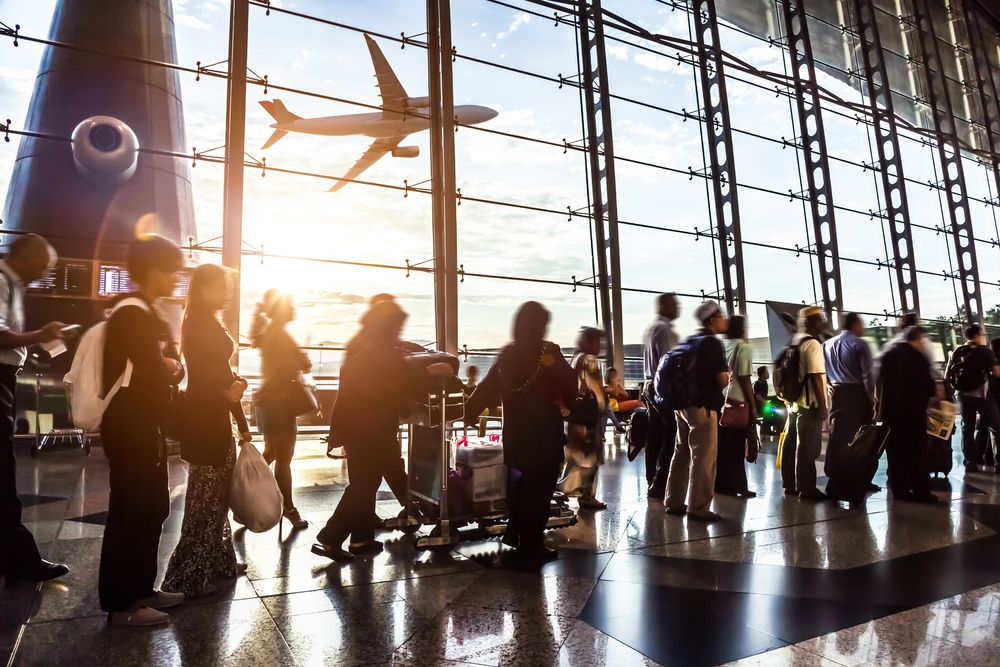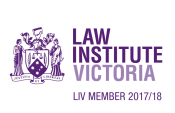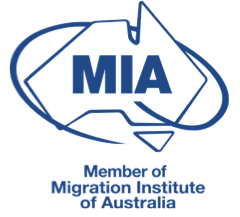Yes, Australian Permanent Residence remains very desirable!
Achieving Australian Permanent Residence remains a dream for most temporary Australian visa holders, or those overseas wanting to migrate to Australia.
We know – most of our team were once aspirational permanent residence seekers, and we all still get a thrill thinking back to the day that we were granted PR (and subsequently Australian citizenship!).
We believe that Australia is the best country to live in and it provides endless opportunities for those willing to put in the effort and embrace the Aussie lifestyle.
Geographically, there are so many fantastic areas to choose from in Australia.
Want to live in a tropical area? Choose Queensland, northern Western Australia or the Northern Territory “top end”.
Prefer a more temperate region? Have a look at Tasmania or Melbourne.
Fabulous fishing? Perth, South Australia and Darwin.
Great bridge and opera house – Sydney!
Fabulous food and wine? Adelaide, Melbourne and Hobart.
Want to do diving and snorkelling? – anywhere along the coast and especially the Great Barrier Reef (Queensland), and Ningaloo Reef (Western Australia).
There are endless place to live, and you are bound to find happiness and life satisfaction in Australia whether you choose to live in a regional area or in one of our sprawling cities.
There are still plenty of pathways to Australian Permanent Residence in 2020
If you want to live in Australia permanently, there are still plenty of pathways to realise your dream!
Here is the definitive guide to your pathway to PR in Australia in 2020 …..
I. Find an Australian Partner or Australian Permanent Resident Partner/spouse.
This pathway to permanent residence requires you to have evidence that you are married to an Australian Citizen or Australian Permanent Resident or are in a de-facto relationship with one.
The relevant visa subclasses are:
- Onshore Partner Visas (Subclass 820/801)
- Offshore Partner Visas (Subclass 309/100), and
- Prospective Marriage Visas, which will lead to the Onshore Partner, Subclass 820/801 Visa, once you are married.
There are two stages to Australian Partner Visas (Subclass 820/801 and Subclass 309/100)
First of all, the so-called provisional (temporary) visa of the Partner Visa is granted (i.e. the Subclass 820 Onshore or the Subclass 309 Offshore is granted). Then the Subclass 801 and/or Subclass 100 Permanent Partner visas are granted.
Applications for the Permanent Partner visa are allowed two years after you have applied for the provisional visa. Sometimes, we are able to request an immediate grant of a Permanent Partner Visa when the applicants have a long term relationship (in excess of 3 years), or have children of the relationship, or compassionate reasons for an immediate permanent residence grant.
Currently the processing time for the Provisional or first stage of the Partner Visa journey is around 24 months.
If you’re able to apply for the Onshore Partner (Subclass 820) Visa, you will be granted a Bridging Visa whilst you await processing of you visa, plus you will have full work rights (once your existing visa expires), and access to Medicare (as soon as you lodge your Subclass 820 Onshore visa application).
If you’re unlawful or do not have a “Substantive Visa” (i.e. any visa other than a bridging visa), you may not be granted work rights and may have to cross some other fairly significant hurdles to have your visa granted whilst you remain in Australia. In these circumstances we strongly advise you seek advice from an experienced Partner Visa Migration Agent or Immigration Lawyer skilled in such matters.
What about the Prospective Marriage Visa option?
Yes, the Prospective Marriage Visa allows the fiancé of an Australian Citizen or Australian Permanent Resident to travel to Australia to marry their partner, and then lodge a Subclass 820, Onshore Partner Visa once they have married. Once you have been granted a Prospective Marriage Visa, you have 9 months to marry.
Then, once you have your Subclass 820 Onshore Provisional Partner Visa, you are on the road to PR! See the paragraph above.
Even if your relationship breaks up, you may still be able to progress to PR if certain circumstances apply to your situation, such as having Australian children of the relationship, or you have suffered domestic violence.
Read our latest blog about relationship breakdowns and situations where you may still be granted a Permanent Partner Visa.
II. There are Skilled Pathways to Australian Permanent Residence as well
There are many general skilled visa options, and they include the:
* Subclass 189, Skilled Independent Visa
* Subclass 190, Skilled Nominated Visa
* Subclass 491, Skilled Work regional (Provisional) Visa
* Subclass 485, Temporary Graduate Visa
* Subclass 887, Skilled Regional Visa
(By clicking on the links above, you will find out all of the information you require about each of the visa types)
The “best” option is the Subclass 189 Visa – if you can make it!
On paper, the clear winner (I.e. the best option) is the Subclass 189, Skilled Independent Visa.
This is because after you are granted this visa you are not tied to an employer, and you owe no obligation to a state or territory to live/work there for at least two years.
As you will read if you click the link above to specific information about the Subclass 189 Visa, you have to be invited to apply for this visa, and you must pass the current Points Test.
Note: We have found in the last 18 months – 2 years, that unless you have extremely high points, you will not receive an invitation to apply.
Subclass 189 New Zealand stream – a brilliant option for New Zealand citizens
The Subclass 189 New Zealand Stream Visa is a perfect option for New Zealand citizens seeking permanent residence, and ultimately Australian citizenship. No points test is required for this visa type.
It is critical to note however that one of the criteria for eligibility is that the New Zealand citizen has been resident in Australia between 27 February 2001 and 19 February 2016, has been continuously resident for five years before applying for the Visa, and for four of those five years, has earned more than $53,900 plus super, unless an exemption applies.
Subclass 190 – an excellent option if your skills are on a state or territory list
If you have an occupation on one of the state occupations lists and can meet the various criteria that each state requires (and these are becoming increasingly complex), this can be an ideal alternative option if you have the skills that a state requires. Often the state or territory will require the Visa holder to live and work in the state or territory for at least two years.
If you are successful in being nominated by a State or Territory, you score an extra 5 points in the current Points Test.
Subclass 491 – a great new regional visa option and priority processing promised
The Subclass 491 is one of the Department of Home Affairs (DHA) new regional visas. If you hold a Subclass 491 Visa for at least 3 years, you are able to progress to Permanent Residence via the Subclass 191 Visa (see below). The Subclass 191 Visa will become available in 2022.
Don’t be put off by the “regional” tag to these visas. Regional areas have been defined very broadly, and basically include all of Australia except for Melbourne, Sydney, and Brisbane. Have a look here for further information about the new regional areas.
Subclass 887 – only for existing Visa Subclass 489 Visa holders
This Visa will eventually become obsolete, as no further Subclass 489 Visas are being issued by the DHA (they ceased on 16 November 2019). However, for those Subclass 489 Visa holders who have lived in their regional area for two years, this remains a pathway to permanent residence after holding the Subclass 489 Visa for two years.
III. The Employer sponsored Pathways to Australian Permanent Residence
These are the:
- Subclass 482, Temporary Skill Shortage Visa
- Subclass 494 Skilled Employer Sponsored Regional (Provisional) Visa
- Subclass 186, Employer Nomination Scheme Visa
- Subclass 191, Permanent Residence(Skilled Regional) Visa
Please click on the links above to find out further information about these visa options.
Subclass 482 Temporary Skills Shortage Visa
Permanent residence is only available to those with occupations on the Medium to Long-term Skills Shortage List (MLTSSL).
If you have been granted a Subclass 482 Visa and you have an occupation on the MLTSSL, you will have been granted your Visa for a maximum of four years. After three years with the same employer (and there are some exemptions to this requirement), you are able to apply for a Subclass 186 Visa via the Temporary Residence Transition Stream (TRT).
There is no transition to PR for Subclass 482 Visa holders who have an occupation on the Short Term Skilled Occupation List (STSOL).
If your occupation is “only” on the Short Term Occupation List – there may be an opportunity for you via the Subclass 494 Visa pathway (see below), or by finding an employer who may sponsor you via the Designated Area Migration Agreement Stream.
What’s a DAMA? Find out here.
Subclass 494 Visa – an exciting opportunity for those with skills not on the MLTSSL
The Subclass 494 Visa is a new regional Visa , where a person who has an occupation on the relevant occupational list can, after three years of holding a Subclass 494 Visa , apply for permanent residence via the Subclass 191 visa scheme. There are 673 occupations on the occupation list, and it is worth checking to see if your occupation is on the list.
Keep in mind, that you need three years of experience in your nominated occupation, an approved skills assessment, an employer who is willing to nominate you, and “competent” English (e.g. IELTS 6) (read about the English Test Scores here)
As stated above, there is so much of Australia to choose if you’re considering applying for a regional Subclass 494 Visa, except for Melbourne, Brisbane, Sydney (find out more about the relevant post codes here).
Subclass 191 Visa – coming in 2022
This Visa will allow Subclass 494 Visa holders and Subclass 491 Visa holders, to transition to Permanent Residence after three years of holding these visas. We do not know the full details of this Visa yet; however, it will be cheap (less than $1000) and an employer nomination will not be required.
As far as we know, once a Subclass 191 visa is granted, there will be no further requirement to live and work in a regional area.
“I absolutely recommend Alice & the AHWC Team for a 5 star service. Colm & I are overjoyed that we have finally been granted our PR after a long & stressful journey to get to this point. Alice was always at hand to answer our many queries in a prompt, efficient & calm manner by phone & email. She initially handled our 457 visa & we were more than happy for her to continue onto our PR application. Our case was complex & Alice was a wealth of knowledge & her positive approach eased our worries. So Alice & the AHWC Team, thank you so so much for making our Australian dreams come true!”Maryann W
IV. Other pathways to PR
Parent Visas
Unless your parent is in Australia, the only viable Parent Visa option for permanent residence is the Contributory Parent Visa – that is, the very expensive option (+/- AUD$50K each).
The non-contributory parent visas, the Subclass 103, and the Subclass 804 parent visas, have a processing time of over 30 years(!!).
Subclass 804 Onshore Permanent Partner Visa – the only viable “non contributory” parent visa
The Subclass 804 Visa is the only viable option for a parent who does not want to or cannot afford to pay for a Contributory Parent Visa – the Subclass 804 visa must be applied for in Australia, and the applicant will be granted a Bridging Visa whilst the application is being processed (yes, even for 30 years!). There is no eligibility for Medicare though and health insurance must be taken out.
Please note that if your parent is granted a Sponsored Parent Visa, they are prevented from applying for any other visa whilst in Australia. There is nothing to stop a parent who was the holder of a Sponsored Parent Visa from applying for another type of Parent Visa if they travel outside Australia, to do so. Clearly though, this eliminates any ability to be able to apply for the Class 804, permanent Parent Visa (Onshore).
Remaining Relative Visa
This is another reason that maybe apply for either with in Australia or outside of Australia. This type of visa also takes decades to process, therefore the only viable option is if an applicant is able to apply for the Visa whilst in Australia, as they would be granted a Bridging Visa to allow them to stay in Australia during the processing of the Visa application.
To be a genuine remaining relative comment on applicant must have no other relatives (That is, siblings, step siblings, parents or stepparents, living outside Australia. In other words, the applicant must be the” last person standing” in their family outside of Australia.
Business and investment Visas
These offer a viable pathway to permanent residence, however many require beat substantial monetary investment in Australia, together with experience and significant business skills.
Student Visas
Student visas allow an applicant to study in Australia, from primary school right through to trade courses, and higher degrees.
The key concepts to keep in mind when choosing a course, is to ensure that it aligns, or will lead to an occupation on a list that will allow progression to permanent residence.
Unfortunately, many Education Agents direct potential student visa applicants to courses that will provide them (i.e. the education agent) with the best commission, without any regard for a proper progression pathway to permanent residence for the student visa holder.
In our view, it is imperative to seek professional guidance from a Registered Migration Agent (Rather than an education agent who is conflicted by the receipt of commission) to assist with the correct selection of courses.
At AHWC we do not seek or accept commissions from educational institutions, which means that our course advice is independent and in your best interests for subsequent PR.
Unfortunately, the maximum amount of time that a Postgraduate 485 Visa is granted these days is two years, and most skilled and employer nominated visas require three years of post-qualification experience. We can often offer ways around these hurdles though.
If you’re considering the student visa pathway to permanent residence, we urge you to seek professional guidance and assistance with the steps that are necessary to be taken, and which courses offer the best pathways to PR.
Child Visas
Child visas are granted to dependent children of Australian citizens or Australian permanent residents. This child meets the requirements of the Visa, they automatically become a permanent resident of Australia.
Adoption Visas
As with the child visas, an adoption visa allows an adopted child to require permanent residence – and often an immediate transition to Australian citizenship, if one or both of the adopted child’s parents is an Australian citizen.
Visitor Visas
Visitor visas are listed because a visitor visa may allow the visa holder to apply for other visas onshore. A classic example of this is being able to apply for a Partner Visa after arriving in Australia as the holder of a visitor Visa. Keep in mind that there are no works rights attached to Visitor Visas though.
Working Holiday Visas
Nowadays, Working Holiday Visa holders may stay in Australia for up to 3 years if you meet the work requirements. This will often provide sufficient time to gain experience in a skilled occupation (Provided it meets the requirements of the working holiday Visa), and look around for a suitable employer to nominate you for an Employer Nominated Visa, or to increase your points to allow you to apply for a skilled independent visa or the new Subclass 491, Skilled Regional Visa, which will allow transition to permanent residence after three years via the Subclass 191 permanent residence visa.
Distinguished talent Visas
A Distinguished talent visa allows a person with a truly exceptional Internationally recognised skills or sporting achievements to apply for permanent residence either within Australia, or from outside of Australia. Where the skills relied on are sporting skills the applicant must have competed at national (country) level, and still be competing/coaching at that level.
.
Protection Visas
A protection visa application by a person who has not arrived by boat may lead to permanent residence, however we do not recommend this pathway unless t there are clear and provable claims of protection against the applicant’s country of origin.
Unlawful boat arrival applicants (So-called Unauthorised Maritime Arrivals – UMA) are these days only granted temporary protection visas, and the pathway to permanent residence is fraught with extreme difficulty, requiring the Minister for Immigration’s permission to apply for other visas, once certain residence requirements are met.
Need help to work your way through the maze of permanent residence visa opportunities? Contact us today and book a consultation with one of our experienced Registered Migration Agents.
With over 40 years of experience collectively, our team of experts is perfectly positioned to explore all of your options with you and develop the perfect “pathway to permanent residence” plan for you.
Start today, and let’s get you PR in 2020!


 Points Test
Points Test
 Book Now
Book Now 


